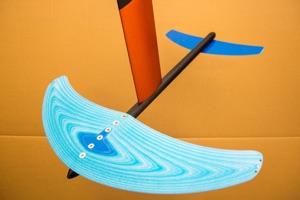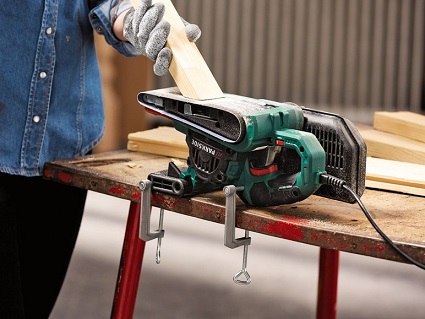Hello
There is enough to cut a few foil wings and stabs…
Price new is 550 euros, I sell one at 100 euros. The people who want it have to pick it up from my home though (the plate is super heavy, about 50 pounds !). I live in St Raphael, close to Cannes, South of France.
Tough but rather heavy, G10 IMHO is underestimated among DiYers although plenty of kitefoil brands are using it: Gong, Ketos, Axis, Zeeko, etc
If you want to know what can be done with a G10 plate, have a look here: http://jimstringfellow.com/Site/stringyfoil.html

A 65cm mast with plate costs 90EUR, a fuselage 40EUR. Probably less if second hand.
With a 1m2 plate, you can make 10 x (900cm2 + 100cm2) sets costing 10EUR each
So a foil will cost you 150EUR.
You just need to find a CNC or a hand router + your airfoil section templates. 
Although they are useful in kitesurfing (being pulled), for an efoil practice, you don’t need any vertical surfaces (winglets) on front wing or rear wing. That makes the wing making much more simple.
I read somewhere that you can make a wing with a belt sander as G10 can be sanded very easily (you need to wear a mask).
Better still, recent models can be maintained upside down on the table with two brackets. Like that you can sand your G10 plate with high precision with both your hands…

An airfoil section can be flat on the intrados (underneath) with low impact on speed. That means that you can sand a front wing in 30/40 minutes.
The 1920’s clark Y airfoil section is a very tolerant airfoil section for this usage: fast + nice stall properties : -8 to +12 degrees at 200.000 Re and even larger window at 300.000 Re that is :

1 Like
Yes. Each wing being so cheap means the joy of having different sets of foi wings for different kinds of wind / kitesurf, windfoil or supfoil l :
Another G10 top candidate is the NACA2408:

PROS: praised by the windfoil wing designers because
- nice round leading edge = very stall tolerant
- 8% thickness to chord ratio (TR) = higher top speed than Clark Y (11.9%)
- flat intrados (bottom surface) = easy to reproduce
CONS:
Calculation of possible max chord of 10mm plate thickness for 0.08 TR
Th/Ch = 0.08 -> Ch = Th / 0.08 -> Ch = 10 / 0.08 = 125 mm
Which possible wingspan for S cm2 with a=12.5cm chord, elliptical planform ?
Pi* a * b = S -> b = 2S / ( PI x a) -> Wingspan = 2b = 4xS / ( PI x a)
For S=900cm2 (standard efoil Wing), wingspan = 3600 / (3.1416 x 12.5) = 92cm (long WS due to short chord)
For S=1200cm2 (early take-off efoil Wing), wingspan = 4800 / (3.1416 x 12.5) = 122cm, not feasible so chord has to be increased within the 1m WS limit. This will decrease the CTTR, increase the max speed but reduce the stall-safe window.
We can check that the 900cm2 half ellipse fits into a 90cm by 12.5cm rectangle (1125 cm2).
Said differently, transforming a rectangular wing into into a semi elliptical planform (to lower the drag) will remove 21.5% of surface (4 -PI) /4






